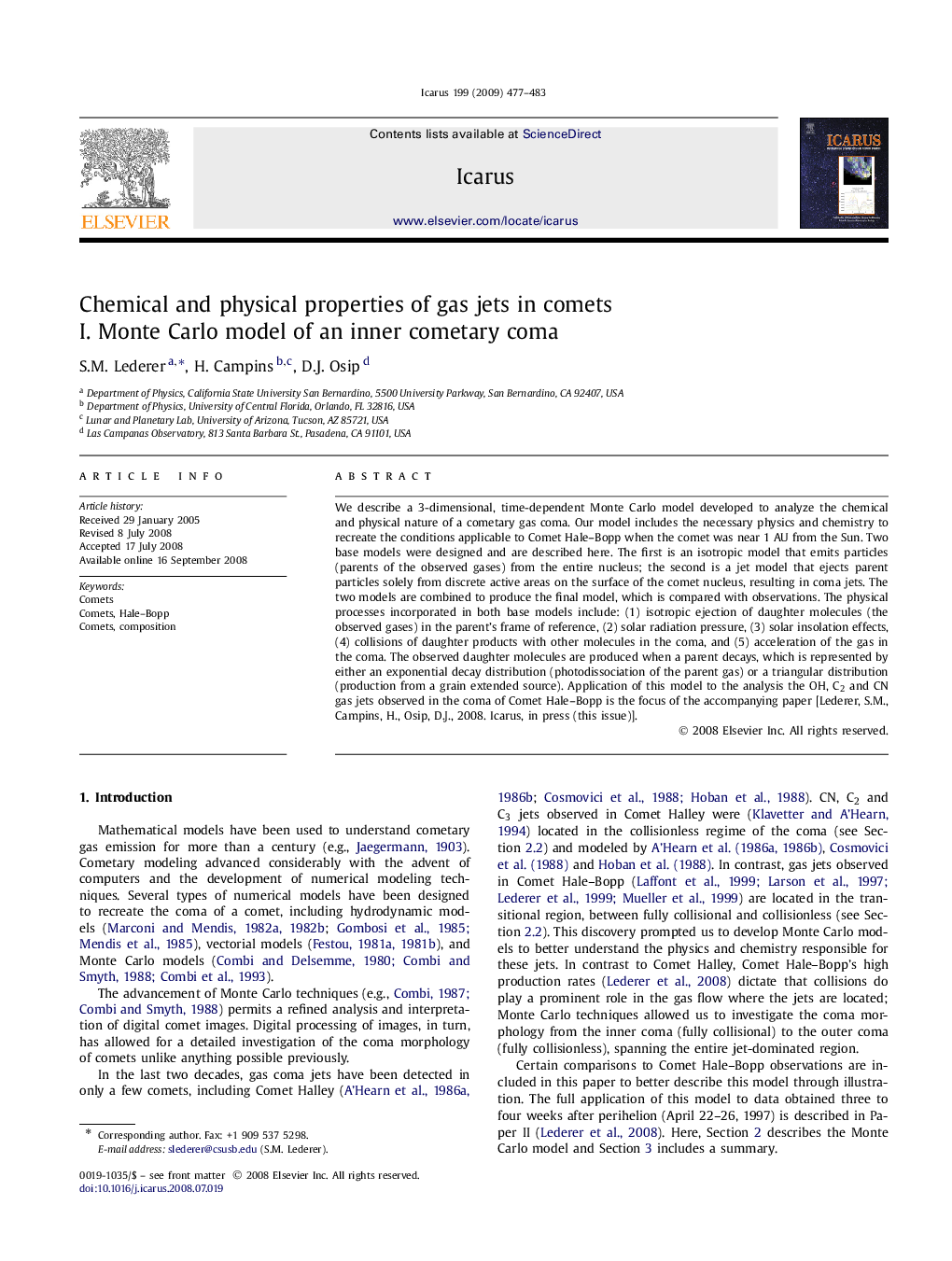| Article ID | Journal | Published Year | Pages | File Type |
|---|---|---|---|---|
| 1775546 | Icarus | 2009 | 7 Pages |
We describe a 3-dimensional, time-dependent Monte Carlo model developed to analyze the chemical and physical nature of a cometary gas coma. Our model includes the necessary physics and chemistry to recreate the conditions applicable to Comet Hale–Bopp when the comet was near 1 AU from the Sun. Two base models were designed and are described here. The first is an isotropic model that emits particles (parents of the observed gases) from the entire nucleus; the second is a jet model that ejects parent particles solely from discrete active areas on the surface of the comet nucleus, resulting in coma jets. The two models are combined to produce the final model, which is compared with observations. The physical processes incorporated in both base models include: (1) isotropic ejection of daughter molecules (the observed gases) in the parent's frame of reference, (2) solar radiation pressure, (3) solar insolation effects, (4) collisions of daughter products with other molecules in the coma, and (5) acceleration of the gas in the coma. The observed daughter molecules are produced when a parent decays, which is represented by either an exponential decay distribution (photodissociation of the parent gas) or a triangular distribution (production from a grain extended source). Application of this model to the analysis the OH, C2 and CN gas jets observed in the coma of Comet Hale–Bopp is the focus of the accompanying paper [Lederer, S.M., Campins, H., Osip, D.J., 2008. Icarus, in press (this issue)].
